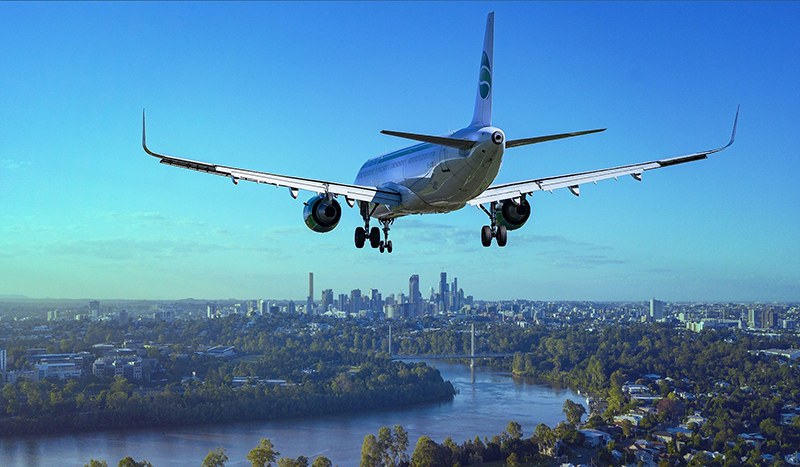By Chris Cogswell, Customer Consultant, Elsevier

Aviation is one of the industries that stands to benefit most from advanced material development, particularly when it comes to new, lightweight materials. Currently the industry, like many others, is facing a very uncertain time as it navigates the COVID-19 crisis. However, this period could prove to be a catalyst for the sector to re-examine its practices and address the environmental concerns that have pushed away many conscious consumers in recent years.
Lightweighting, and using new and innovative materials and composites on aircraft, is one of the most effective ways to reduce emissions during air travel. Materials scientists focused on the aviation industry have a chance during this slowdown to further advance this innovation. Redesigning the materials currently used in a cost-effective way will help lower carbon emissions without sacrificing performance and will help to bring back passengers and rebuild the industry in a post-pandemic world.
Materials and aviation
Lightweighting has been on the R&D radar increasingly in recent decades. Research into the field is growing, with the number of research documents featuring “aviation” and “lightweight” consistently increasing from 1980 to 2019 (source: Scopus August 2020).

Improving green practices and lightweighting is also an area currently being backed by the UK Government; it recently unveiled £200 million of funding for green spending in the aviation industry, allocating it to projects such as energy-efficient electric aircraft components, and high-performance engines and wing designs intended to minimize fuel consumption. Similarly, in late 2019, the US Department of Energy announced $55 million of funding for programs to support electric aviation R&D focusing on emissions reduction. All these projects will rely on lightweight, heat resistant, low friction materials or combinations of materials, for which researchers need access to accurate information and data to be able to fully assess their commercial feasibility.
To progress this research area further, companies should look to collaborate with the top institutions in the field. This will not only reduce the duplication of work, but also help get new designs to market faster, which is critical for the COVID-19 recovery and will also contribute to job creation. The graph below shows the current top 10 institutions publishing in lightweighting and aviation (source: Scopus, August 2020):

Design for manufacturability
The significance of materials science and innovation in aeronautic design cannot be overstated, and the challenges faced are both complex and demanding before environmental issues are even considered. The Boeing 747, for instance, requires more than 6,000,000 components from numerous materials systems and suppliers worldwide. The key concerns in advanced material development are material properties, available manufacturing options for material fabrication and finally, but crucially, cost.
In aerospace development, access to verified and accurate data is critically important as there is no margin for error and tolerances are much more precise than almost any other industry. As such, design for manufacturability (DFM), the engineering approach of designing components with both function and manufacturing requirements in mind, is being applied more and more due to the constraints from temperature resistances and need to accomplish certain loads. This give-and-take relationship between material and design is a particular consideration when investigating next-generation materials.
Traditionally, aluminum was used for the majority of aerospace components, up to 85% in some designs, and is still often utilized today. But the way it’s used has shifted dramatically in recent years; more aircraft structures are now built from composite and modified alloys, for example titanium aluminide and aluminide lithium – although they’ve been around since the 1970’s, they were previously too expensive for use, but are now gaining traction as the two materials weigh half what traditional nickel alloys weigh.
New research also shows the potential of nanomaterials such as metal-matrix nanocomposites or polymer and ceramic based versions – they are strong and resistant to damage, but their interaction with UV rays and lightning is still not completely understood. Another material being incorporated into design is graphene; it can make aircraft wings more efficient by reducing weight and fuel consumption. Graphene also has a variety of electrical applications, for example in epoxy resins that boost electrical conductivity of carbon composites in fuselages, removing the need for heavy copper wiring. Lightning strikes pose a big risk in aviation, therefore by creating a conductive cage around the entire aircraft, it can mitigate this risk significantly.
Continuing innovation during a crisis
Finding new solutions and applications for materials is essential for the future of the aviation industry, through improvements to efficiency and emissions, especially if airlines are to make a strong and sustainable recovery from the effects of COVID-19 crisis. There is now an abundance of data available in materials science, utilizing this offers real potential for data-driven research to address the global challenges we are facing, while helping to reduce the industry’s impact on climate change. To keep pace with new discoveries, engineers and researchers need access to data in easy to use and search formats, so they can understand the sustainability of their choices, the commercial feasibility, and to mitigate risks.





Tell Us What You Think!